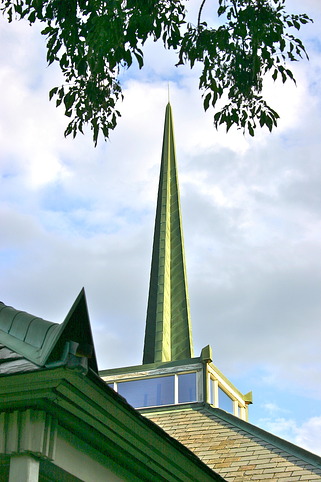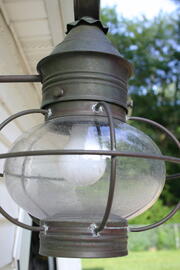 First Lady Eleanor Roosevelt wrote in her book "This is America" of Main Street in Hingham, Massachusetts, “This is the most beautiful main street in America.” Historical Hingham was settled in 1633 and as I was driving one of its first roads recently, I realized it would be hard to disagree with her assessment. Big, beautiful, well-manicured homes are recessed from the street; stone walls built by craftsman mold into the contours of the land; old-growth trees shade the neighborhood.
First Lady Eleanor Roosevelt wrote in her book "This is America" of Main Street in Hingham, Massachusetts, “This is the most beautiful main street in America.” Historical Hingham was settled in 1633 and as I was driving one of its first roads recently, I realized it would be hard to disagree with her assessment. Big, beautiful, well-manicured homes are recessed from the street; stone walls built by craftsman mold into the contours of the land; old-growth trees shade the neighborhood.
I took a left off Main Street onto Route 228, heading east for the beaches, and just around the corner stood the library with its copper spire and copper gutters and downspouts outlining the building. It was like the light green patina was the ‘blood” of the building ribboning up through the veins to the steeple reaching toward the heavens. I love copper as an architectural material. Gold domes may be more striking but the richness and solid appearance of copper’s green patina is just as beautiful to me.
Copper is an amazing metal; truly a gift. Of course, because it has free electrons and is a malleable metal, trades have used it for electrical wiring and the electronics business has used it in similar capacities. Many may not know that copper is a bactericide. Microbes cannot exist in its presence. Studies performed by hospitals have shown a  95% reduction in microbial activity when touch surfaces have been changed to copper products. What a remarkable tool for reducing infections.
95% reduction in microbial activity when touch surfaces have been changed to copper products. What a remarkable tool for reducing infections.
As an architectural material, copper is very long lasting. The patina comes from the oxidation process, a form of corrosion, and the copper salts (or patina) will help protect copper from further degradation. The patina salt is the barrier to protect the rest of the metal. Consider the Statue of Liberty: the “skin” attached to the frame is copper and the statue is located in an extremely corrosive environment where moist salt air is constantly on the attack. The Statue lasted a hundred years before it needed to be restored.
My wife and I have copper lanterns outside the entryways of our home. After about five years, they have not grown their patina salts yet. They turned from the copper color relatively quickly to a brown color then they turn black; next the green salts will develop. What is interesting is that the patina color shade is based on the types of gases that react with the copper from the local area.
My love of copper has increased through years of research and sales work with our business, Liberty Packaging. Tiny, highly reactive conductive copper particles are a base material in our Intercept Technology protective packaging line. This packaging material allows companies to successfully protect their products from corrosion, electrostatic discharge, fungus, mold, and mildew when shipping and storing all around the globe. Intercept packaging is a wonderful plastic where the copper particles are reacted into the polymer matrix and cannot come out or slough off; Intercept has all the wonderful benefits that copper provides and the flexible form of plastics.

Intercept Technology Packaging products fit within a sustainability strategy because they are reusable, recyclable, do not contain or use volatile components (No VOCs, Not a VCI) and leave a smaller carbon footprint than most traditional protective packaging products.
Liberty Intercept Blog
The Beauty of Copper
Posted by Joe Spitz on Aug 4, 2011 6:59:00 AM
I took a left off Main Street onto Route 228, heading east for the beaches, and just around the corner stood the library with its copper spire and copper gutters and downspouts outlining the building. It was like the light green patina was the ‘blood” of the building ribboning up through the veins to the steeple reaching toward the heavens. I love copper as an architectural material. Gold domes may be more striking but the richness and solid appearance of copper’s green patina is just as beautiful to me.
Copper is an amazing metal; truly a gift. Of course, because it has free electrons and is a malleable metal, trades have used it for electrical wiring and the electronics business has used it in similar capacities. Many may not know that copper is a bactericide. Microbes cannot exist in its presence. Studies performed by hospitals have shown a 95% reduction in microbial activity when touch surfaces have been changed to copper products. What a remarkable tool for reducing infections.
95% reduction in microbial activity when touch surfaces have been changed to copper products. What a remarkable tool for reducing infections.
As an architectural material, copper is very long lasting. The patina comes from the oxidation process, a form of corrosion, and the copper salts (or patina) will help protect copper from further degradation. The patina salt is the barrier to protect the rest of the metal. Consider the Statue of Liberty: the “skin” attached to the frame is copper and the statue is located in an extremely corrosive environment where moist salt air is constantly on the attack. The Statue lasted a hundred years before it needed to be restored.
My wife and I have copper lanterns outside the entryways of our home. After about five years, they have not grown their patina salts yet. They turned from the copper color relatively quickly to a brown color then they turn black; next the green salts will develop. What is interesting is that the patina color shade is based on the types of gases that react with the copper from the local area.
My love of copper has increased through years of research and sales work with our business, Liberty Packaging. Tiny, highly reactive conductive copper particles are a base material in our Intercept Technology protective packaging line. This packaging material allows companies to successfully protect their products from corrosion, electrostatic discharge, fungus, mold, and mildew when shipping and storing all around the globe. Intercept packaging is a wonderful plastic where the copper particles are reacted into the polymer matrix and cannot come out or slough off; Intercept has all the wonderful benefits that copper provides and the flexible form of plastics.
Intercept Technology Packaging products fit within a sustainability strategy because they are reusable, recyclable, do not contain or use volatile components (No VOCs, Not a VCI) and leave a smaller carbon footprint than most traditional protective packaging products.
Topics: Copper, Intercept Technology packaging, American manufacturing
Related Posts
19 Hours: an Intercept CU22 Mask Wearer's Travelogue
Copper as Anti-Microbial
Copper and the Alchemy of Bronze
Leave a Comment